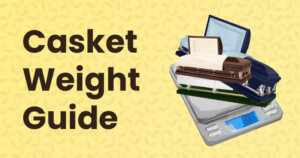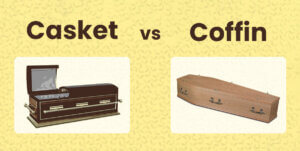Most modern caskets lock using a universal casket key owned by funeral homes, while older and more affordable models are typically sealed shut using simple metal latches or clasps. Caskets are primarily locked for symbolic reasons and to protect the deceased’s body in transport.
Of course, the problem with locks is that sometimes people want to unlock them.
Naturally, this is something that funeral directors usually seek to avoid. Locking a casket at the end of an open-casket funeral service can bring a sense of “finality” to the service.
But sometimes, there are legitimate reasons to reopen a coffin or casket.
For a distraught mother who wants to see the body one last time? For a keepsake that a brother forgot to place in the coffin?
Once a casket is locked and sealed, it can be reopened using the same key it was closed with. However, once it is buried, it needs to be exhumed to be reopened. Typically, exhumation is only allowed in specific circumstances, such as for medical or criminal investigations or construction.
In this article, I will explain everything you need to know about how and why funeral directors lock (and reopen) caskets and coffins. Read on to learn more.
In This Article
How Do Caskets Lock?
How a casket locks, or if it locks at all, depends on the type of casket.
A coffin or casket made out of something like cardboard or wicker won’t lock. At all. They may have mechanisms to ensure they’re secure during transit – but that’s about it.
Once you move to more traditional types of caskets, that’s when you start looking at “real” locking mechanisms.
The simplest example is a metal latch or clasp that can be operated without a key. While these locks are less common nowadays, they are still found in many more budget caskets. Especially ones made from wood.
Latches Without a Key
Casket latches without keys are usually found on lower-quality wooden or metal unsealed caskets.
After closing the casket lid, you can twist or lift a screw or tab, which moves the latch and locks the lid in place. To reopen the casket, you would twist the tab in the opposite direction and lift the casket open.
This mechanism resembles the one used to “lock” a jewelry box – but on a bigger scale.
You can see an example of these simple metal latches under the lid of the wooden casket in the image below:
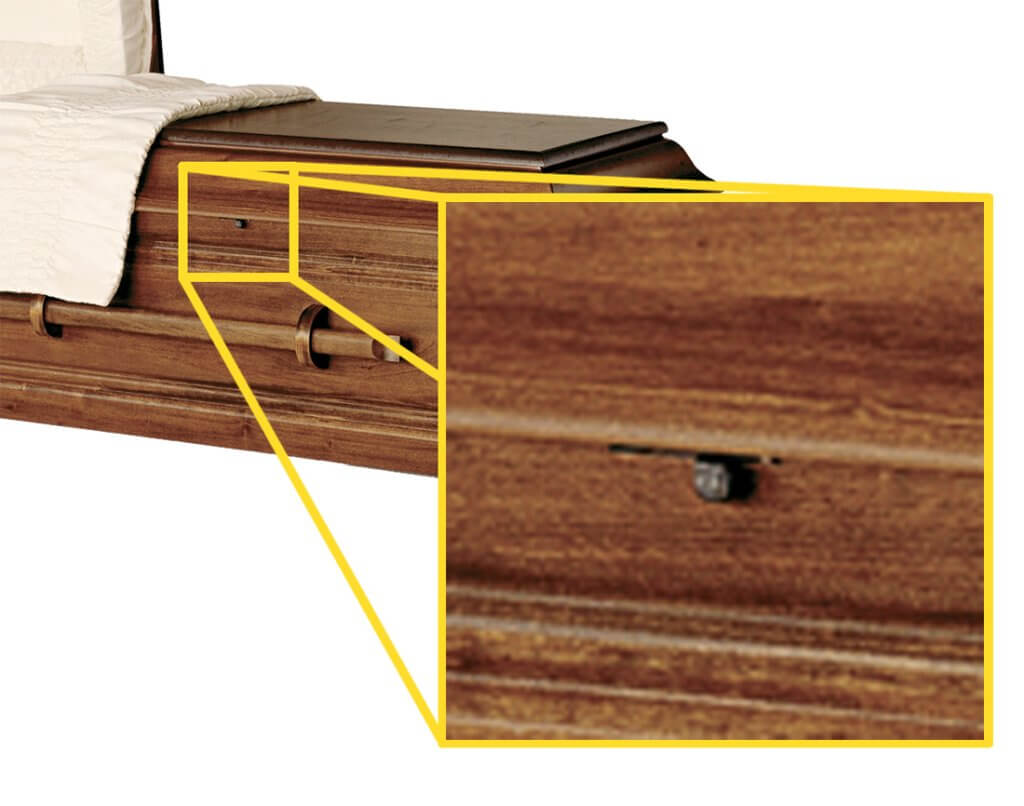
Casket Keys
Most caskets are opened with “casket keys” owned by a funeral home.
Casket keys are universal hexagonal hex/Allen keys used across the funeral industry. They are compatible with unsealed and sealed caskets, and metal and wooden caskets.

Most wooden caskets have a hexagonal keyhole on the side of the casket lid for the universal key to be placed in and turned. As you turn the key clockwise, a latch will hook over a metal piece on the bottom half of the casket and lock in place.
This type of locking system is known as a coffin lock, which you can see in the image below:
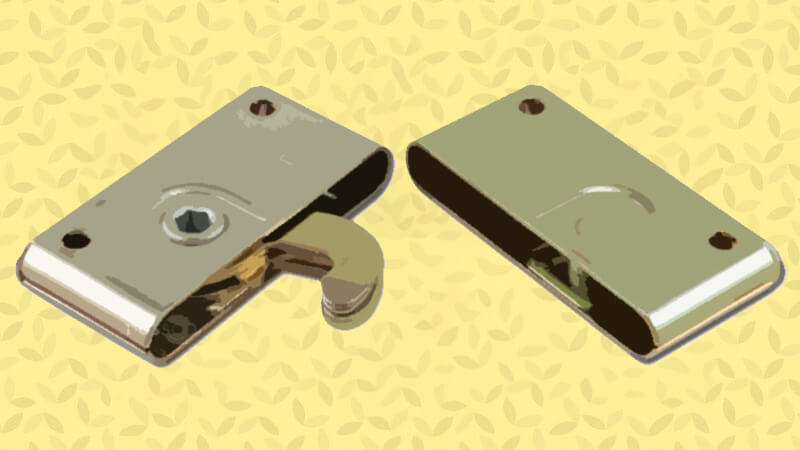
Hermetically Sealed Caskets
Gasketed metal caskets lock with casket keys as well. However, the placement of the keyhole and the interior mechanism are different.
The keyhole will be on the bottom left of the casket rather than on the side. You can see this in the image below, and it applies whether the casket is full couch or half couch:
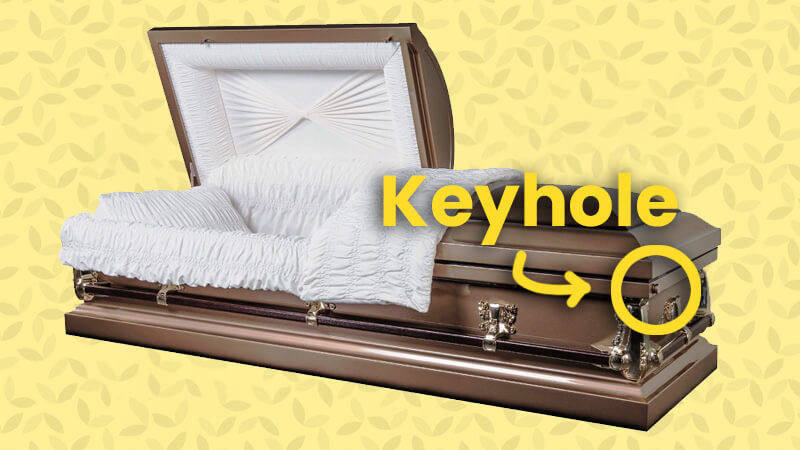
To lock a sealed casket, first, the lid is lowered to close the casket. One or two metal latches on the lid will enter into holes that sit along the rubber gasket on the bottom half of the casket.
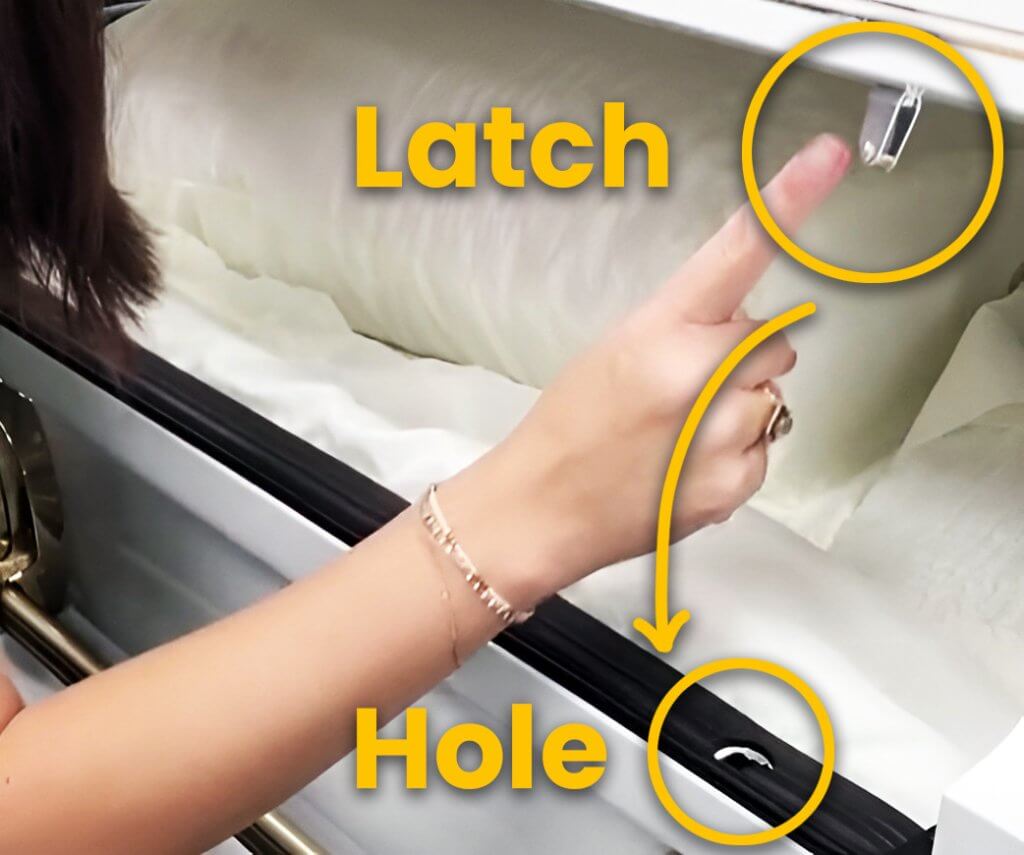
After closing the lid safely to form a seal with the gasket, the funeral director will remove a piece covering the keyhole. The sealing key is then inserted and turned (many, many times) to tighten the rubber seal and lock the casket shut.
You can see a video demonstration of this here:
Traditional Coffins
Coffins work differently from caskets.
Yes, they lock, but they don’t need a key most of the time.
Typically, coffins are secured shut with six or more screws spread across the coffin’s lid. Turning these will lock the coffin shut. If required, you can reopen the coffin by turning the screws in the opposite direction.

Why Do Caskets Lock?
Now you know how caskets lock, you might wonder – why?
I mean, the mechanisms above aren’t exactly foolproof. They’re not going to obstruct a determined graverobber.
So, what’s the deal?
To Protect the Body
First, caskets lock and are sealed to protect the remains inside.
You may have seen an old sitcom where the pallbearers drop the casket, and the body falls out. In reality, this is something funeral homes and casket makers want to avoid at all costs.
Locking the casket ensures this is something that won’t happen. Even after dropping a sealed casket, the body will stay securely inside.
Even caskets that don’t lock will have a mechanism to keep them secured shut during transport.
For example, caskets at Jewish funerals can’t include metal, so wooden pegs ensure the lid is secure instead.
More generally, a locked casket can protect the body from wandering hands. Families want to prevent people from interacting with the body at a closed-casket funeral service, and having a sealed container naturally helps with this.
To Seal the Casket Shut Tighter
A hermetically sealed casket is air-tight and waterproof. In theory. But no casket will protect a body forever. It’s complicated.
At the very least, they are supposed to have an air-tight seal and be waterproof to guard from the natural elements and slow the decomposition process of the casket.
Of course, if you want it to stay this way, you need to ensure it it sealed shut very tightly.
So the locking mechanisms built into gasketed caskets are designed to facilitate this. Every twist of the lock pulls the upper and lower halves of a casket closer together.
For Health and Safety Reasons
Death smells. And bodies are not clean. As they decompose, they emit unpleasant smells and can often contain bacteria.
So when transporting caskets, especially across the world, having a lock ensures that others are protected from the body inside. A sealed casket is usually compulsory for international travel.
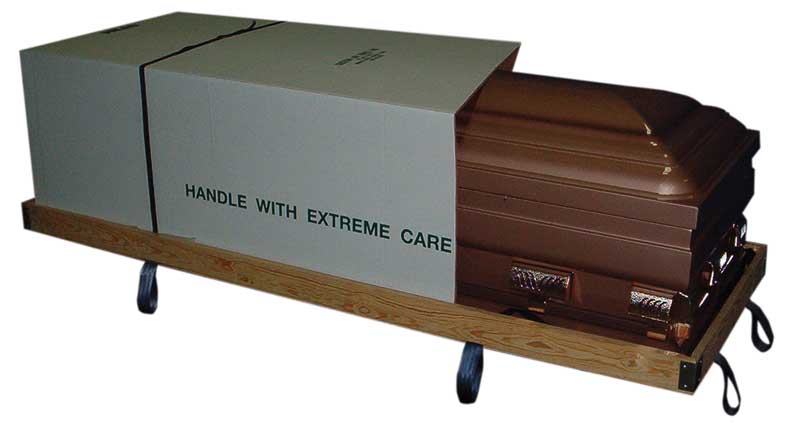
Turning to the earth, hermetic seals also protect the ground from toxic chemicals used in embalming fluid.
Of course, this is only a temporary delay. All caskets decompose eventually. And the chemicals in an embalmed body will make their way into the ground at some point. If you care about protecting the earth, I’d suggest looking towards a natural burial without a casket at all.
Symbolic Reasons
Finally, locking a casket can be symbolic of “finality”.
In the same way people sometimes cover the deceased’s face before closing a casket, locking it can be a ritual that helps the deceased’s family members say their final goodbye.
Once a Casket is Sealed, Can it Be Reopened?
Nothing physically prevents a casket from being unlocked and reopened before it is buried in a grave.
When preparing for a funeral, funeral directors will seal, lock, and reopen caskets several times. They may close and seal it shut for transport to the funeral, then open it during the service. They might lock it overnight but open it to apply the body’s makeup during the day.
Even after closing the casket at the end of a funeral, someone can reopen it if necessary. While this is something funeral homes try to avoid, it is not impossible or even impractical to do so if a family member asks.
The problem comes after the body has been buried. For it to be reopened at that point, it will need to be exhumed (i.e. “dug up”).
Exhumation
Exhumation is a tricky legal area.
Typically, a body can be exhumed and reopened only in very specific circumstances. These include:
- For a criminal investigation,
- For historical reasons,
- For a medical investigation,
- When a deceased person’s family petitions their local authorities/government to approve exhumation,
- When a cemetery is being relocated/constructed.
There is a general disinclination towards disturbing deceased bodies. An application to exhume a body simply to reopen the casket and view the deceased is unlikely to be successful in most countries.
Can a Casket Be Opened from the Inside?
Caskets are not designed to be opened from the inside once sealed. On a lower-quality wood casket with a simple metal latch, it may be possible to break the lock and push the lid open. But opening it from the inside would be very difficult in a metal casket or one buried under 6 feet of soil.
If it makes you feel any better, the last recorded case of someone thought to be deceased supposedly being accidentally buried alive was in 1937.
In light of this, it makes little sense to build caskets so they can be unlocked from the inside. Although that doesn’t stop people from trying.
The Bottom Line
Yes, caskets lock. For both practical and symbolic reasons.
And yes, caskets can be reopened and unlocked when necessary. A special key is not required to do it. Just make sure you tell them to stop before the body’s in the ground!
If you have any further questions about the locking mechanism of caskets or anything else beyond life, please feel free to get in touch or leave a comment below.



